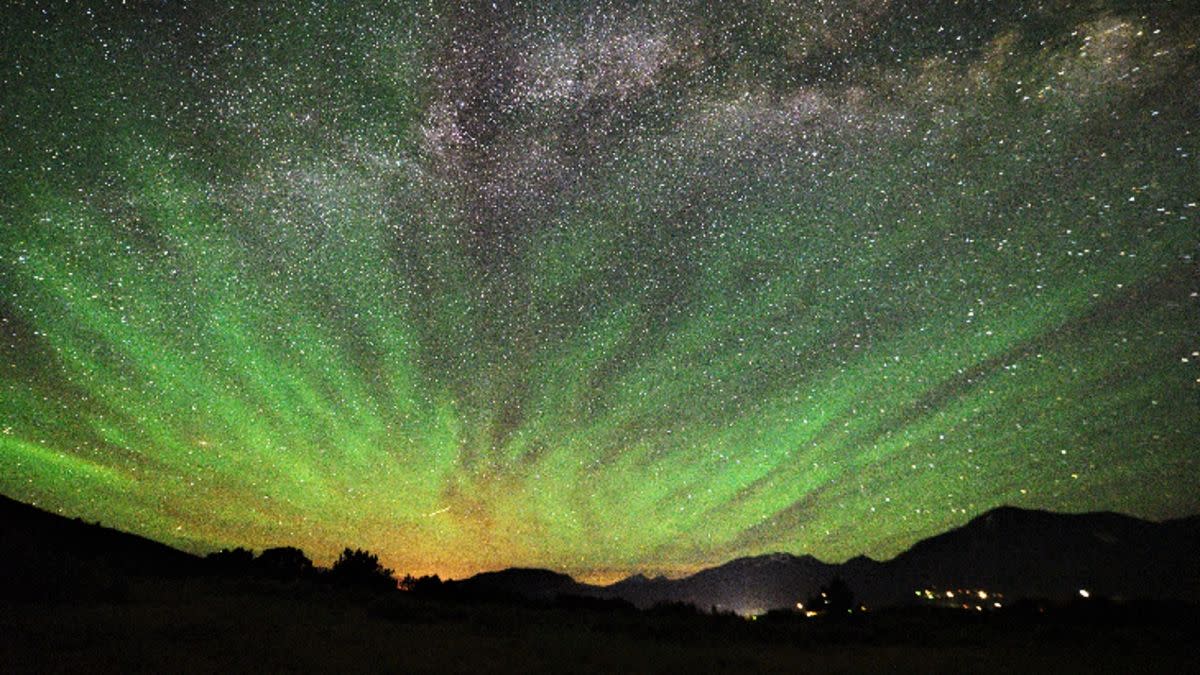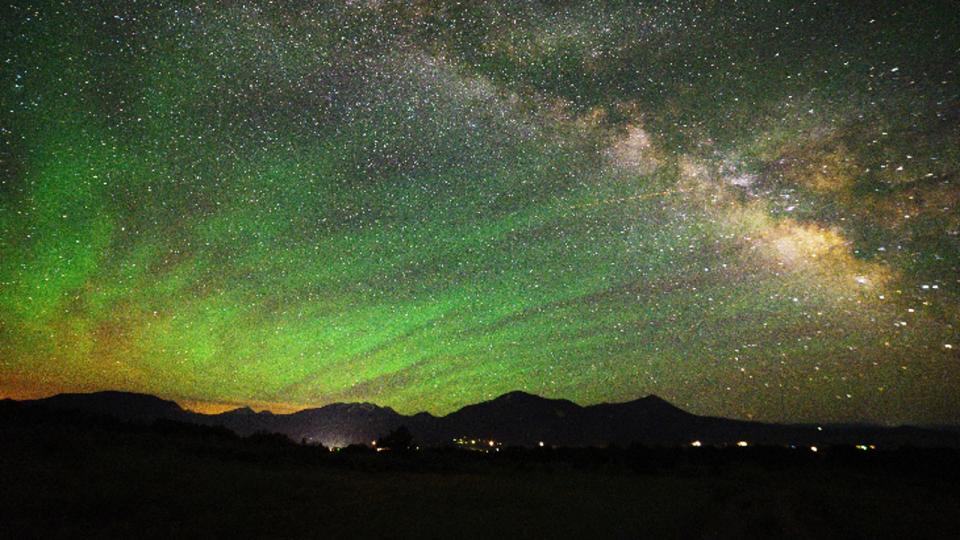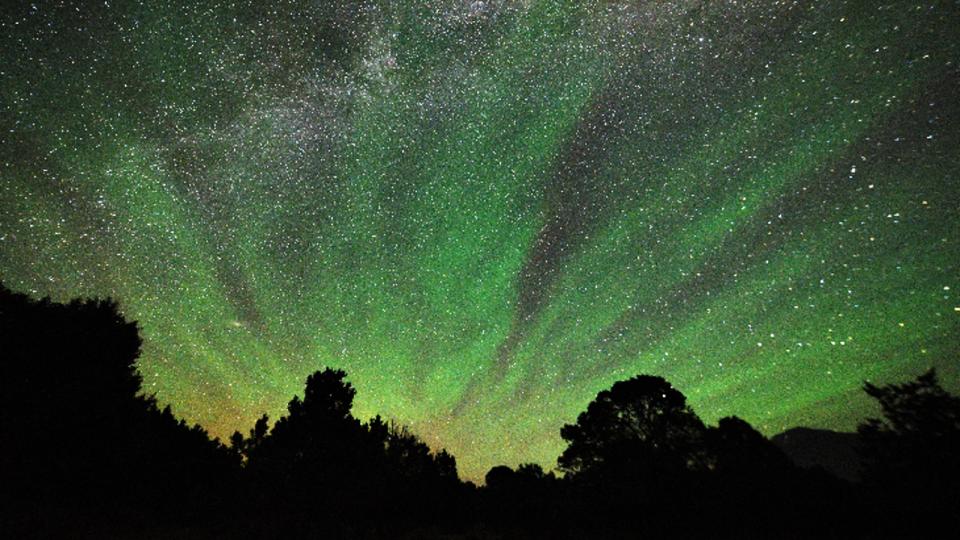Rare streaks of light above US are a sign that solar maximum is fast approaching

A photographer recently snapped images of vibrant green streaks of light hanging apparently motionless in the star-filled sky above a U.S. mountain range. The eerie light show may look like auroras, but it's actually an even rarer phenomenon.
Aaron Watson captured the stunning display near the West Elk Mountains in Colorado. The streaky emerald lights emerged just before midnight on June 21 and lasted for around 2 hours, during which they slowly shifted across the sky, Watson told Live Science in an email. Similar but less-intense versions of these lights were also spotted in other parts of Colorado, according to Spaceweather.com.
At first, Watson believed the lights belonged to noctilucent, or night shining, clouds, which were forecast to become more frequent in June and July this year. But as the vibrant colors emerged, this seemed unlikely. He also speculated they could be a slow-moving auroral display or a related phenomena, such as STEVE or a stable auroral arc that was set off by a solar storm bashing into Earth.
However, there was no solar storm at this time. Instead, the lights are the result of a phenomenon known as "airglow," which is triggered in the upper reaches of Earth's atmosphere by less-extreme forms of solar radiation. Airglow is rarely seen from the ground, but it could become a more common sight in the coming months and years as solar activity ramps up, Spaceweather.com said.
Related: Solar activity may peak 1 year earlier than thought. Here is what it means for us
Experts recently revealed to Live Science that the upcoming peak of solar activity, which was due to arrive in 2025 and be relatively weak compared with historic past peaks, may actually arrive as early as the end of 2023 and be more active than previously expected. The sight of such vibrant airglow further supports this hypothesis.
A study published March 2021 in the journal JGR Space Physics, revealed that airglow has historically been most visible during previous solar maximums — the period of the roughly 11-year solar cycle where solar activity peaks and the sun releases more radiation and solar storms. Tracking changes in airglow can therefore help track solar cycle progression, according to NASA. (Auroras also become more common during the solar maximum.)
Airglow and auroras are both triggered by solar radiation hitting Earth, but the mechanisms behind them are very different: Auroras form when powerful streams of solar radiation, known as solar wind, or fast-moving clouds of magnetized plasma, known as coronal mass ejections (CMEs), smash into Earth's magnetic field. This temporarily weakens Earth's defensive shield, enabling solar radiation to penetrate deep into the atmosphere and excite air molecules so they emit bright, dancing colors.


But airglow is created by gradual solar radiation, which ionizes, or strips electrons from, gas molecules during the day. At night, these ionized molecules react with gases carrying an extra electron to regain their lost particles. These reactions release a lot of energy, which is given off as light similar to those emitted by auroras. But it causes a more gradual and often fainter light show.
Related Stories:
— Eerie ring of red light flashes like a massive UFO above Italy. What was it?
— Where to see the northern lights: 2023 aurora borealis guide
Airglow forms 50 to 300 miles (80 to 480 kilometers) above Earth's surface in a region of the atmosphere known as the ionosphere. At higher altitudes, airglow takes on a red color, which is produced by excited nitrogen atoms. But the green lights in the new image are a result of excited oxygen atoms and are most prominent between 56 and 62 miles (90 and 100 km) above the ground, according to Spaceweather.com.
Airglow is not the only sign from the upper atmosphere that solar maximum is fast approaching. The thermosphere, the second last layer of the atmosphere that overlaps with the ionosphere, is also warming faster than it has in almost 20 years as it soaks up energy from increasingly frequent solar storms.
Originally published on LiveScience.com.
